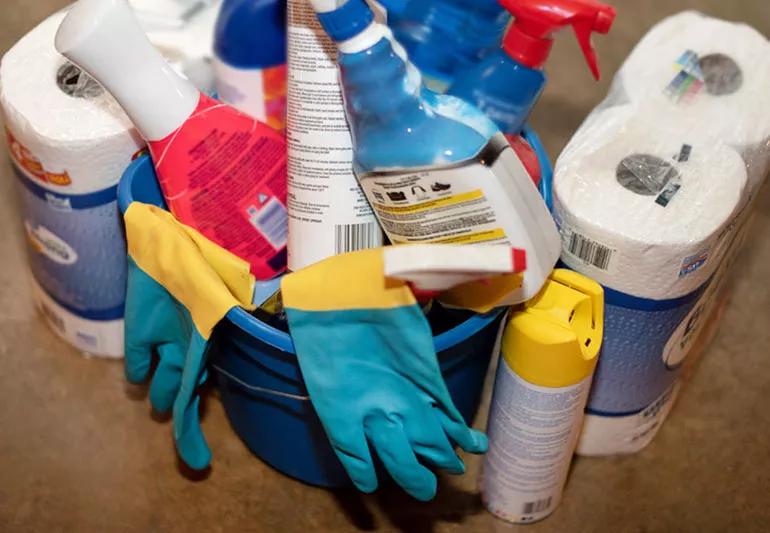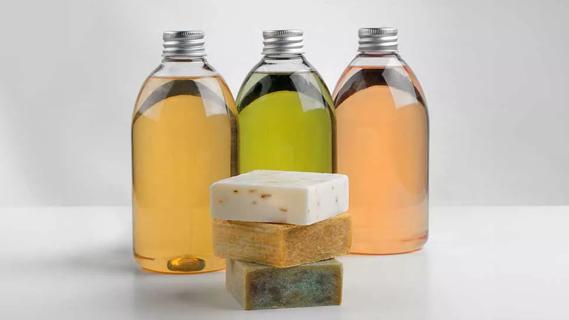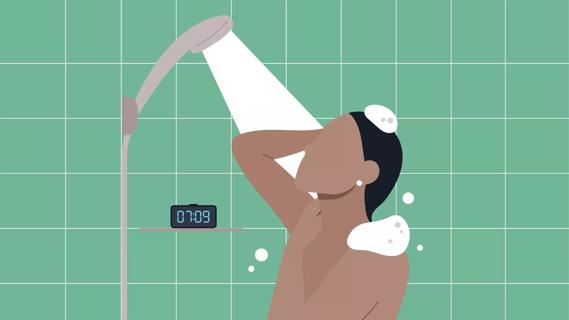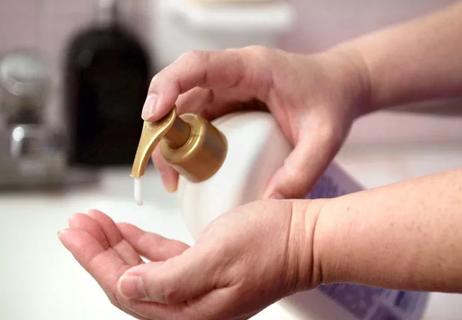Chemicals in household cleaners can be dangerous and deserve your attention

Bacteria and germs tend to be tough — and there are A LOT of them lurking inside your home. And by a lot, we’re talking hundreds of thousands of micro-organisms per square inch in some spots.
Advertisement
Cleveland Clinic is a non-profit academic medical center. Advertising on our site helps support our mission. We do not endorse non-Cleveland Clinic products or services. Policy
Getting rid of these unwanted (and icky) guests requires cleaners and disinfectants that pack a punch. These products are strong given the competition they’re up against.
But that strength is also why you need to be extremely careful with them — especially in households with children. Many cleaners contain ingredients that can irritate your skin, eyes, nose and throat. They can also be poisonous if swallowed, even in small doses.
To learn a little more about these potential household hazards and how to minimize risk, we turn to pediatric emergency medicine specialist Purva Grover, MD, and pediatrician Eva Love, MD.
Before we get too far into this discussion, let’s make one point clear: Most household cleaning products are reasonably safe when used as directed. (That’s a point that deserves extra emphasis.)
Of course, accidents and mistakes happen, notes Dr. Grover. That was clear as folks started scrubbing more during the coronavirus pandemic, when poison control centers saw a whopping 20% jump in calls related to cleaning products.
Swallowing cleaning products can result in confusion, nausea, vomiting, breathing problems and other symptoms, depending on what and how much was ingested, says Dr. Grover, medical director of Cleveland Clinic Children’s Pediatric Emergency Departments.
Advertisement
Here are some products that often lead to emergency calls and why they can be a concern:
Household bleach contains the chemical sodium hypochlorite, with concentrations ranging from 0.7% to 5.25%. These percentages are the amount of the chemical in the liquid; the rest of the liquid is mostly water.
Chlorine bleach liquid and vapors can irritate your skin, eyes, nose and throat. Dermatitis may result from direct skin contact. Ingestion can cause esophageal injury, stomach irritation and prolonged nausea and vomiting.
There are numerous “all-purpose” cleaning products on the market to handle the messes life throws your way. Chemicals in these multitasking products may include ammonia, ethylene glycol monobutyl acetate, sodium hypochlorite or trisodium phosphate.
Depending upon the ingredients used, all-purpose cleaners can irritate your skin, eyes, nose and throat. And they can be highly poisonous if swallowed.
Antibacterial cleaners usually contain water, a fragrance, a surfactant (to break up dirt) and a pesticide. The pesticides commonly used in antibacterial cleaners are quaternary ammonium or phenolic chemicals. Antibacterial cleaners can irritate your eyes and burn your skin and throat.
The basic ingredients of window/glass cleaners are ammonia and isopropanol. These products may be irritating to your eyes, skin, nose and throat. If swallowed, they may cause drowsiness, unconsciousness or death.
Laundry detergent pods may look like colorful pieces of candy, but there’s nothing sugary sweet in these products. They contain enzymes — as noted by the names “cationic,” “anionic” or “non-ionic” on the label — to loosen stains and ground-in dirt.
Cationic detergents are the most toxic when taken internally and can result in nausea, vomiting, shock, convulsions or coma. “Non-ionic” detergents are less toxic but can irritate skin and eyes.
One last note: Asthma can develop if a person is exposed to large quantities of detergent.
The main ingredient in automatic and hand dishwashing detergents is phosphate. Automatic dishwashing detergents are known to produce skin irritations or burns and may be poisonous if swallowed.
Hand dishwashing detergents are milder than automatic dishwashing detergents. If swallowed, they may cause nausea and irritation to your mouth and throat.
The basic ingredient in oven cleaners is lye, consisting of either sodium hydroxide or potassium hydroxide). Lye is extremely corrosive and can burn your skin and eyes. It can cause severe tissue damage and may be fatal if swallowed.
Advertisement
When working with oven cleaners, wear an apron, gloves and safety goggles. Make sure the work area is well-ventilated so you avoid breathing the fumes.
The best tip? Non-toxic oven cleaners without lye are available. Try to use one.
Many of the pet flea and tick treatment products contain pesticides that consist of the chemicals imidacloprid, fipronil, pyrethrins, permethrin and methoprene. These chemicals can cause headaches, dizziness, twitching and nausea.
When using these products on your dog or cat, be sure not to pet them for at least 24 hours. If you forget and do pet them (because who can resist), wash your hands and skin immediately with a lot of soap and water.
Insecticides contain some of the same pesticides found in pet flea and tick treatments in addition to diazinon, propoxur and chlorpyrifos. Exposure reactions may be similar, too.
Surprised to see this on the list? It’s understandable. Given our pandemic experiences over the past few years, hand sanitizer seems to be nearly everywhere. It’s hard to think of it as being dangerous.
But most hand sanitizers contain at least 60% alcohol — a stronger concentration than is found in most liquors. Kids ingesting even small amounts of hand sanitizer could experience alcohol poisoning.
Advertisement
The product is typically pretty available to children, too. Just think of all the pumps and small, easy-to-open bottles in your life.
“Hand sanitizer is sometimes packaged in a way that is very appealing to children,” notes Dr. Love. “Many of these products come in bright colors, contain eye-catching glitter or smell enticing to children.”
For safety purposes, kids should only use hand sanitizer under supervision. An adult should squeeze a dime-sized drop into their hands and watch them rub it in until their hands are dry.
Young children are more susceptible to the dangers of household cleaners. (Let’s be realistic, too: They’re also far more likely to taste test these products given how often they shove things in their mouths.)
“It doesn’t take much to make a child sick,” says Dr. Love. “Their small body size and fast metabolism increase their risk of developing significant toxicity from these products.”
If a child or anyone else in your home ingests any household cleaning product, call 1.800.222.1222 to connect to your local poison control center. (Call 911 if the person stops breathing, collapses or has a seizure.)
You can also get help online at poison.org or through the web POISONCONTROL app available through the website.
Advertisement
“Do not wait for a child to look or act sick,” Dr. Love stresses. “Nurses, pharmacists and toxicologists are available to quickly answer your questions and tell you what to do next.”
Let’s start with the obvious, which can’t be highlighted enough: You should never swallow or inhale any household cleaning or disinfecting products. Avoid getting them in your eyes or on your skin, too.
Beyond that, here are some other tips to protect people in your home and help prevent accidents from happening:
Cleaners and disinfectants may be common items in household cabinets, but that doesn’t mean they don’t come with a bit of danger. Be aware that you’re using chemicals that can cause harm if used improperly.
So, be cautious and careful when you’re making your house sparkle.
Learn more about our editorial process.
Advertisement

You’re sharing your sheets with dust mites, bacteria and lots of dead skin, so you’ll want to keep your bedding fresh

You may notice itching, redness and swelling after wearing or using laundered items

We don’t fully understand how cleanliness impacts immune system development, but we do know that preventing illness is important

How often you lather up your locks can depend on various factors, like hair type, age and ethnicity

An icy blast may boost mental clarity, increase circulation and give your skin a little glow — but don’t overdo it

This olive oil-based soap is generally mild and safe when diluted

It’s a wash — when you bathe is a personal preference

Try turning the heat down on the water and opting for a moisturizing soap

Babies can get congested easily, but you can calm their cough by keeping them hydrated, using nasal drops and running a humidifier

Weight loss may cause loose, sagging skin and muscle loss to your rear

Several conditions, like vitiligo and fungal infection, can cause a loss of pigmentation, leading to white spots or patches on your skin